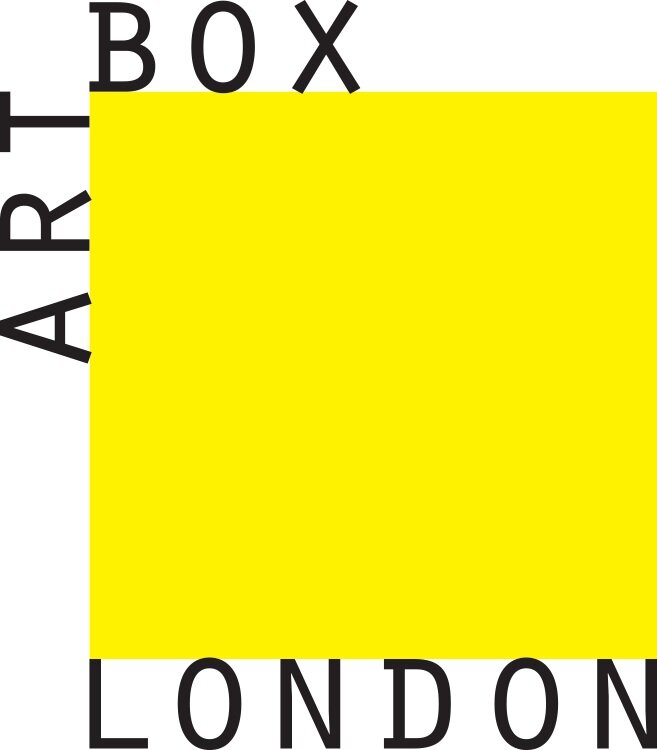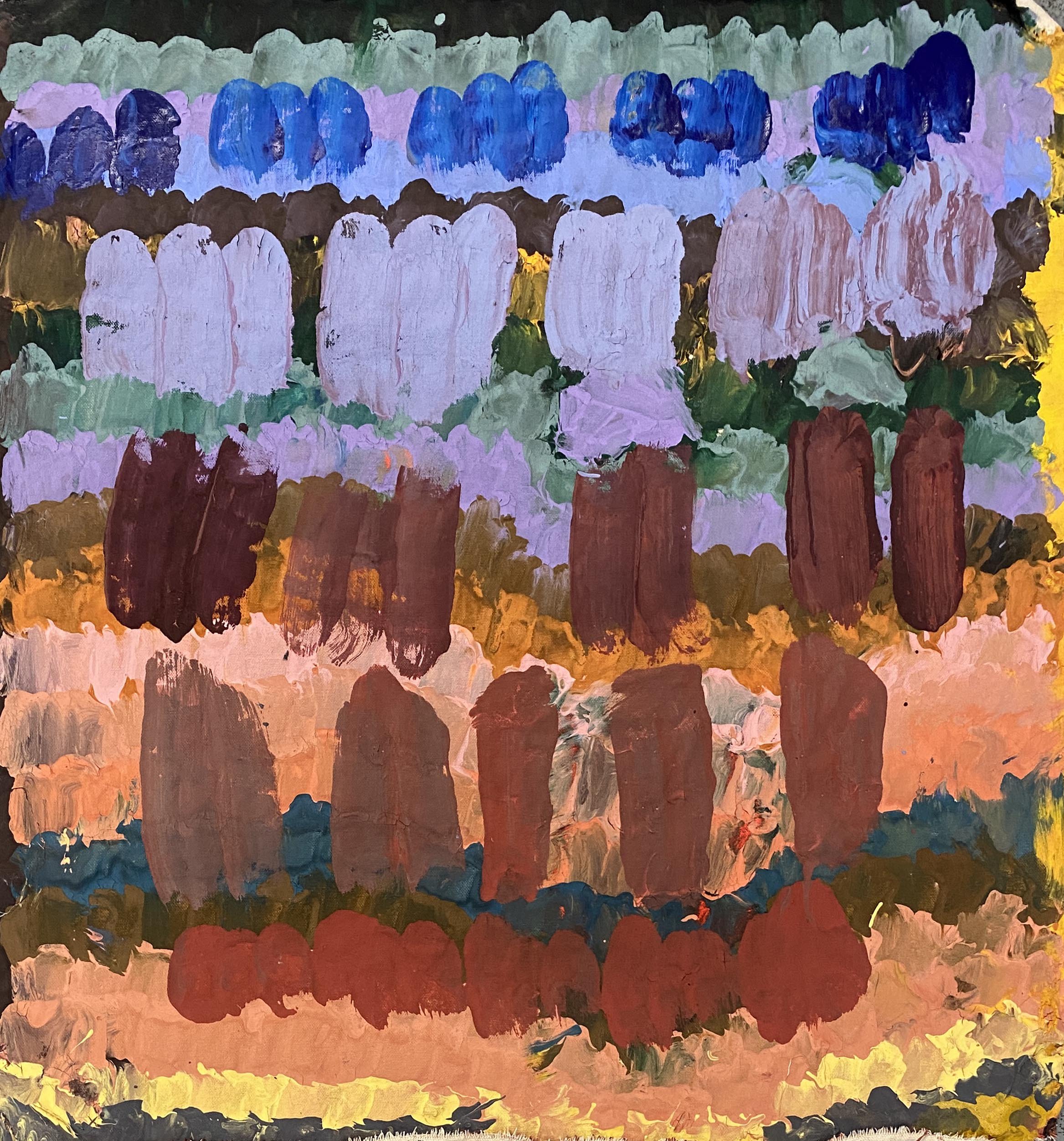Artbox at the Museum of Methodism
15.03.23 - 24.05.23
The Museum of Methodism, 49 City Road, London, EC1Y 1AU
Artbox has teamed up with The Museum of Methodism in London’s Old Street to present a diverse mix of artworks that reflect the structure, approaches and values of John Wesley and the Methodists. Exhibiting artists include: Violet, Rivka, Richard, Paul, Patricia, Nicola, Fatma, Joel and Anna.
About the Artists
Richard
Richard’s pictures are a reflection of his sweet and gentle nature - dreamlike, colourful, intricately patterned boats and buildings occupy his landscapes, all carefully rendered in soft, soothing pastel tones.
A motif Richard likes to depict often is the boat - a symbol of freedom, escape, the exotic, expanding one’s horizons. John Wesley travelled far and wide, including boat journeys to other countries in his efforts to expand Methodism.
Toyin
For Toyin, making art is a form of therapy - a prayer, a ritual, a source of deep comfort that she repeats again and again. Her output is wide and vast - sometimes it might be figurative: characters from real situations and environments might be reinterpreted as superhero characters. Sometimes her work is more concerned with shape, pattern and colour.
In this piece, the comfort Toyin gets from repetition and making art is plain to see - multiple smaller paintings on canvas have been sewn together to form a tapestry. Its vibrant colour, size and grid like nature calls to mind the stained glass windows in the chapel above.
Violet
Violet's pieces combine myth, fantasy, dreams and the surreal with the everyday. Floating eyes might hover over a cat, or plants may morph into animals and people. Her Greek Cypriot heritage also blends into this mix and anchors the pieces to the ancient, the arcane.
Recently, she has described her pieces as meditation on bereavement and loss, seeing them as ways to peer into the beyond, to consider what, in her words, "the next world looks like".
Paul
Paul’s vivid paintings often recall scenes of tropical islands or distant lands - sun soaked paradises awash with bright flowers. A fascination with the exotic is also found in his still life pieces depicting cut flowers or houseplants. In paining pictures of plants, Paul manages to find the same comfort and relief that an absorption in nature can bring. Gardens like the chapel garden here at the John Wesley museum are the easiest way for us to establish an interest in the world of plants and nature.
Rivka
Rivka's artwork often addresses themes surrounding mental health and the awareness of issues facing neuro-diverse people. Repetition plays a key role in the pieces here, where grids, motifs and shapes provide structure and an echo, and statements of care, love and affirmation are repeated again and again like a mantra. In this way, her work is perhaps reminiscent of prayer.
Anna
Anna has a considered approach to her work. She enjoys using a colour palette of yellow, red and shades of green. Anna’s abstract shapes take on a motif like quality.
In these pieces she worked slowly, accurately and intuitively to compose the shapes on the canvas.
She incorporated sewing, adding painted pieces in a patchwork style to the canvas.
The patchwork shapes Anna has cut are both obscure and simple and she has arranged these in a way that reflects her painting style.
Anna really enjoyed the process of adding wool yarn to the piece describing it as ‘funny’. This resembles the way Anna works, she paints and uses colours she enjoys and finds parts of the process humorous, and is playful in this approach.
Sabrina
This piece relates to “What one generation tolerates, the next will embrace”
Back in June, I celebrated Pride Month by creating a special one-page comic starring some of my own characters. Pride Month is an annual month-long celebration of the LGBTQ+ community, highlighting their achievements as well as raising awareness of issues that affect them, and campaigning for a more inclusive environment. Each panel’s background reflects a specific Pride flag, from the familiar rainbow flag to more specialised flags representing smaller communities, such as the lesbian and bisexual communities.
Being a member of the LGBTQ+ community myself (I identify as bisexual), many of my characters are also LGBTQ+. Two in particular, Dallas and Corpus Christi (who are the third couple to appear in this comic), also identify as bisexual and are married to each other. Dallas uses they/them pronouns in addition to he/him.
I’ve always been inspired by geography, personifying places and giving them stories. In recent years, I’ve focused more on Texas due to going on holiday there back in 2021 to visit family. I have used my experiences in Texas and issues affecting the LGBTQ+ community there in shaping Dallas and Corpus Christi’s narrative; Texas tends to be much more conservative when it comes to the LGBTQ+ community, which is a prime factor in me raising awareness of societal issues via the art I create and the stories I write.
Fatma
Fatma enjoys the process of painting, noticing and choosing colours, and pays attention to covering every inch of the surface, which is often canvas, in pattern, colour and line.
Fatmas approach to painting is methodical. She often starts with painting the borders, each in a different colour, then applies thick layers of acrylic paint in alternating colours, in lines across the canvas and layers motifs that recur frequently, such as wavy and zig-zag lines.
Herald
Herald works predominantly in oil pastels, he likes to use vibrant colours to highlight important figures from the civil rights movement, black history, arts and entertainment. Just as John Wesley was something of an icon in his day, with his likeness being widely reproduced, Herald’s work explores modern iconography - celebrities, historical figures, sports stars and actors.
Joel
I created this piece using inspiration from a drawing at the British museum. The inspiration behind the background are the desert and mountains because I thought it works well with my piece with ideas about artwork.
I came up with the ideas of repeating the text to simplify my idea and get the key points behind the work across.
I chose this statue from the British museum because I think he is a strong warrier. He is a warning to racist people. You will get bad karma, he might cast a spell on you. I have used the tape and tracing paper because it is creative. Politeness is repeated because it is important to be polite to people. Respect elders is there because sometimes old people can't stand so you should offer them a seat. Yin and yang is about good and bad, White means good and black means bad. Don't judge them means don't judge a book by its cover. Kindness - because you should be kind and respectful. This piece is a warning like a statue is a warning. Statues can hold evil spirits.
This piece relates to my identity because it links to my ideas of respecting elders and other human beings.
Patricia
Patricia’s work often involves the figure, depicted in a range of bold and dramatic ways. Sometimes these are on a monumental scale, reminiscent of stain glass windows, or using unusual mediums and methods, such as in this piece, where clay depictions of John Wesley and other biblical characters are mounted to colourful, patterned backgrounds, arranged in a triptych, perhaps reminiscent of a stained glass window, or a relief carving.
In all of her works, Patricia has a clear narrative in mind for who the characters in her work are, be it from dreams or books or real life, and bold, vivid and fun way of depicting the figure.
Finding The Methodist Museum:
49 City Road, London, EC1Y 1AU
The Chapel & Museum entrance is situated on City Road.

















